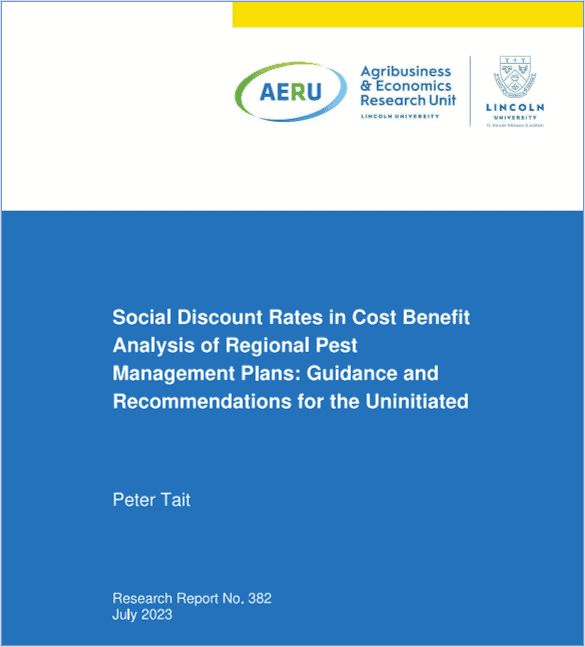Say you are a decision-maker deciding between two projects – should I fund this public works project for x amount that will take y time for a future benefit of z or do I fund this other project for amount a that will take b time to yield c benefit?
For big decisions like these, a formal cost benefit analysis is important. But how do you compare ongoing costs and ongoing future benefits for projects that are happening on different time scales? For example, how do you compare the cost and benefit of a project happening on a five-year time scale with a project happening on a ten-year time scale?
The very short answer is that we use discounting.
“Discounting is simply how we treat monetary measures of value that occur in the future in a consistent way,” says Peter Tait, Associate Professor in the Agribusiness & Economics Research Unit at Lincoln University.

This means that, mathematically, future costs and benefits are calculated to be worth less. In other words, they are discounted.
“Part of the reason for this is that behaviourally, people prefer to consume goods and services now rather than in the future,” says Peter.
The New Zealand Treasury encourages important public sector decisions to be informed by cost benefit analyses and provides guidance on what discounting rate to use is different circumstances.
However, the discounting rates they recommend are all fixed. And if you apply the same constant rate year after year, costs and benefits are valued less and less over time. This means that mathematically, costs and benefits occurring in the distant future are trivial to current considerations.
“Anything past about 20 to 25 years has a very minimal contribution to the assessment of whether that project should go ahead. The costs, since they are close to the front of the project, aren’t discounted very much at all. They weigh more into the analysis than the future benefits do.”
Peter Tait
Using this kind of fixed discount rate is called exponential discounting.
“There’s no real behavioural aspect that supports exponential discounting,” says Peter. “It’s more about mathematical convenience. It’s handy and you get nice properties in your analysis.”
Exponential discounting is especially ill-suited for analysing the costs and benefits of environmental projects.
“Large environmental investments are characterised by relatively large up-front costs, and the benefits might be delayed for a period but then continue to occur further out into the future.”
Under exponential discounting, the benefits occurring in decades or generations are discounted so heavily that the maths makes it seem like that a project just isn’t beneficial, even though we logically know that it is.
Instead of using constant rate exponential discounting for environmental projects, Peter supports the use of a declining social discount rate that considers a longer future time frame.
“I didn’t invent declining social discounting. Most of our global peers are doing this type of discounting for environmental projects.”
Peter Tait
Declining discount rates can be used for projects whose goals are to maximise the wellbeing of society through time and explicitly consider the wellbeing of future generations. Instead of the fixed discount rate characteristic of exponential discounting, these rates decrease over time. Future costs and benefits are still discounted but because those discounts are less over time, the maths no longer completely degrades the future costs and benefits of long-term environmental projects.
“This approach is more reflective of how society values future environmental benefits,” says Peter. “It is also more compatible with the inter-generational thinking of Māori”.
Peter explains this new-to-New Zealand approach to discounting in a research report prepared for BioHeritage that was published in July: you can access the report here. He uses Regional Pest Management Plans to contextualise and compare constant exponential discounting with declining rate discounting.
“I hope that the report empowers people to consider using alternative approaches to choosing discount rates,” says Peter.

Jenny Leonard
